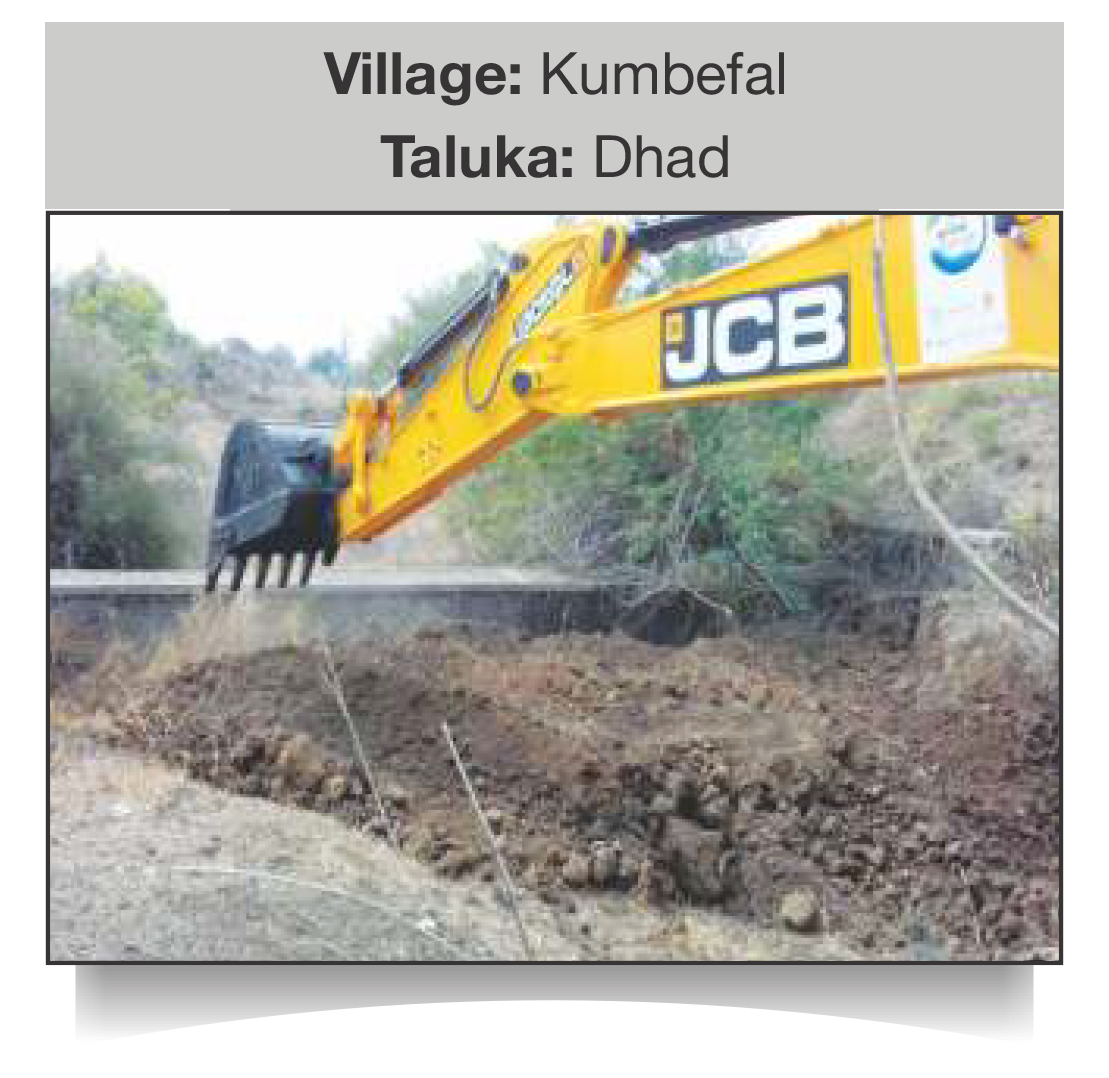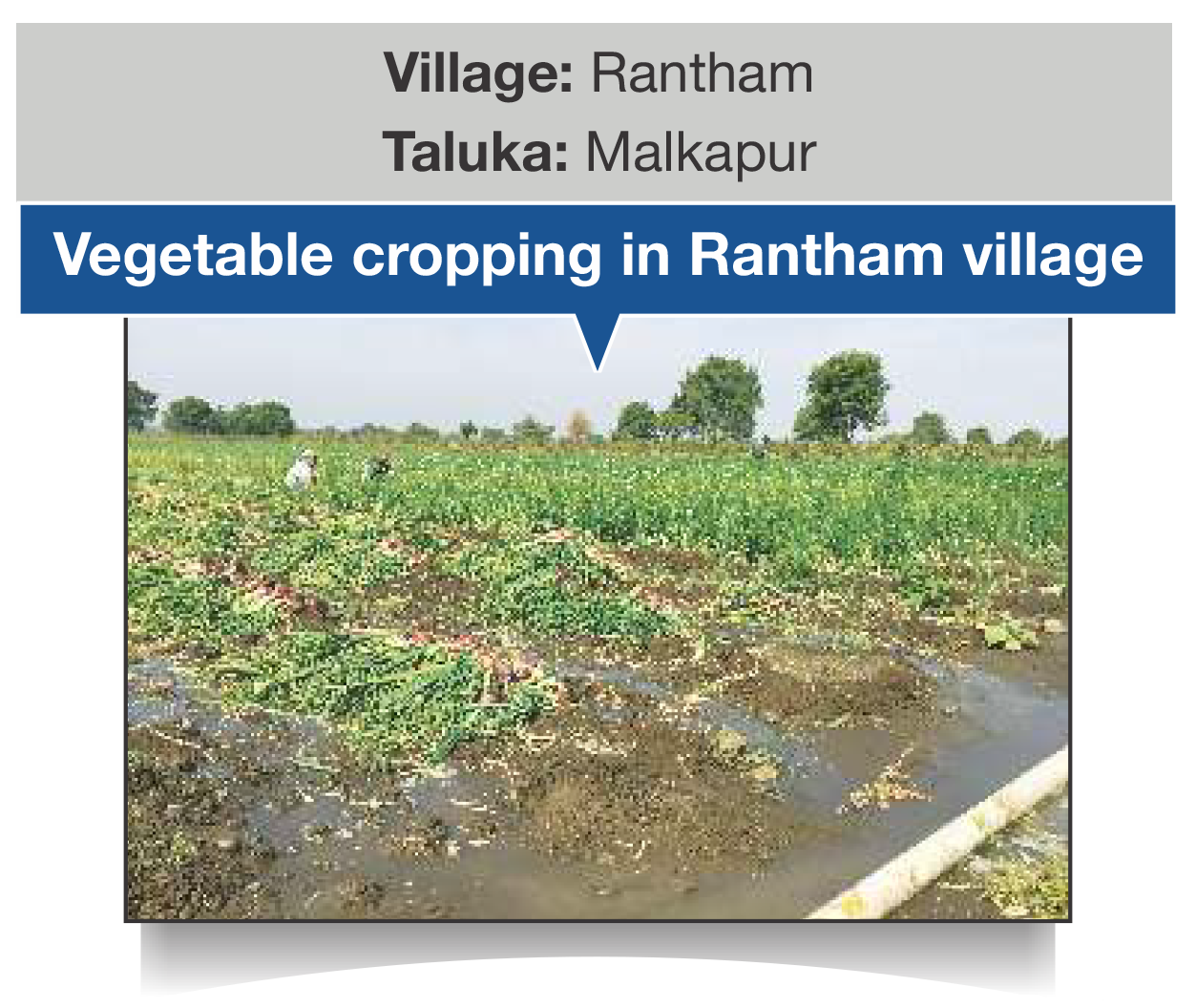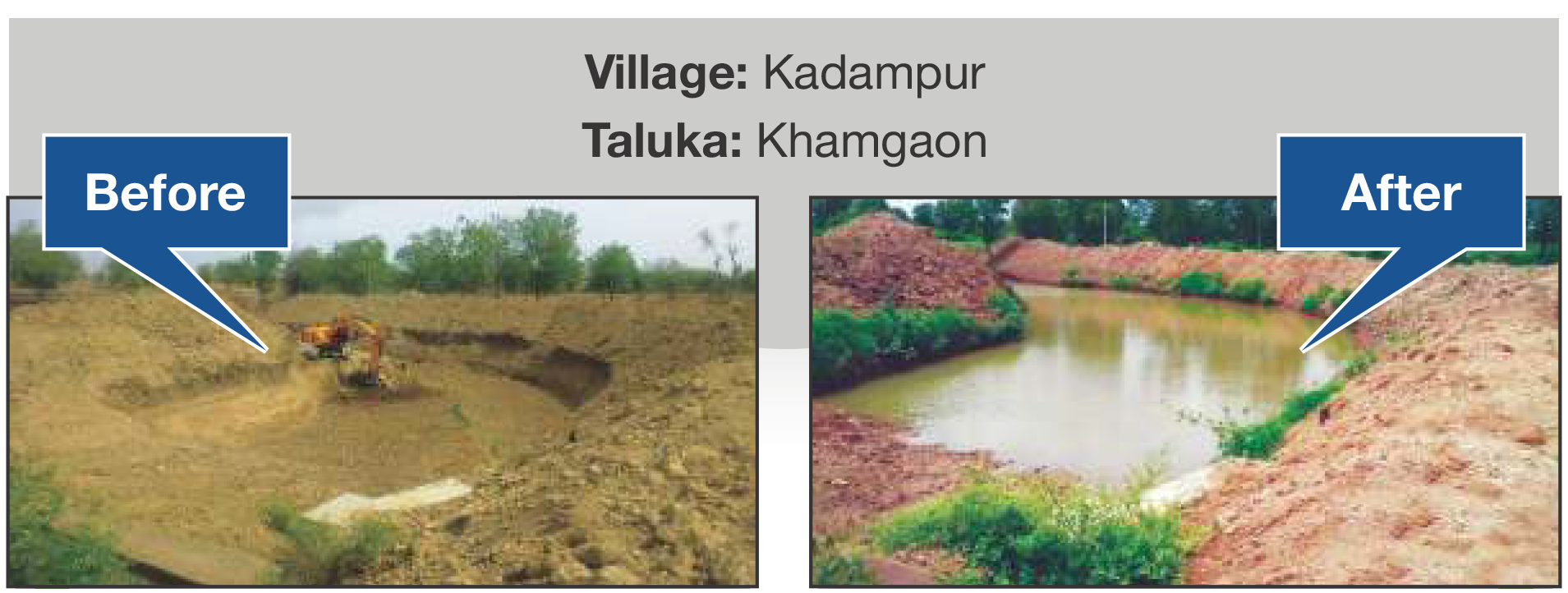
District Administration identified the priority water structures in all thirteen talukas of Buldhana and accordingly in consultation with the structure owner department delegated the work to all the concerned departments.
Shri Suresh Bagale, Buldhana Tehsildar, and his team while pursuing their work discovered a new water structure which was not in the list of the identified water bodies.
This water structure was present in the Kumbefal village where around 2500 to 3000 people were residing and struggling due to scarcity of water. The check-dam had lost its identity due to
many layers of silt stored over it. Villagers requested the district team to extend their support to revive it again.
The structure owner department team assessed the feasibility of the earthwork and did other pre-requisite formalities. Dhad cluster officer and concerned talathi took the lead for revival work of the dam. The revival of the ‘Kumbefal Bandhara’ brings immeasurable happiness in lives of the villagers!

‘Rantham’ is a small village with a population of around 1300 only. Villagers are mostly involved in agriculture work. Lack of adequate rainfall has affected, the socio-economic condition of farmers. The only pond in the village has lost its water retention capacity due to lack of maintenance and accumulation of silt. District Administration and BJS carried out the required maintenance and earthwork in the tank and 31 thousand cubic meter of silt was brought out from its bed.
The earthwork of the pond brought about remarkable result for the villagers. The water conservation capacity of the pond increased by 31 Lakh cubic litres. Villagers used the water for agriculture purpose; they started wheat cultivation as well as large number of farmers started vegetable cropping. The silt used by the farmers reduced their expense on chemical fertilisers marginally. Village head (Sarpanch) also encouraged the youth for self-employment by giving them opportunity to do free fishing in the pond and also provided the fish seeds.
Thus ‘Sujalam Suphalam’ helped in rejuvenation of the village by increasing the soil productivity, ground water level, crop yield, and helped in changing the cropping pattern.

During the British era, Khamgaon was known as “Cotton City”, due to the rich and high-quality production of cotton. As the time passed with the irregular rainfall pattern, it has lost its grace.Approximate 90% of the village population(10,000) are dependent on rain-fed agriculture work. The only nala in the village is in despairand defunct condition due to siltation and irregular monsoon. BJS mobilised the community and conducted the required earthwork in the ‘Nala’.
Around 41 thousand cubic meters of silt was excavated enabling the increased water holding capacity by 4 crores litres of water. The excavated silt was also used by farmers to spread in the area of 68 acres of land to improve farm productivity. With the expectation of improved crop production, farmers are now thinking about changing the crop pattern and use of high yielding varieties. Further, farmers are also thinking about diversifying to horticultural crops.
